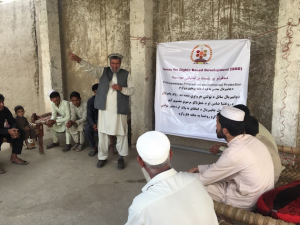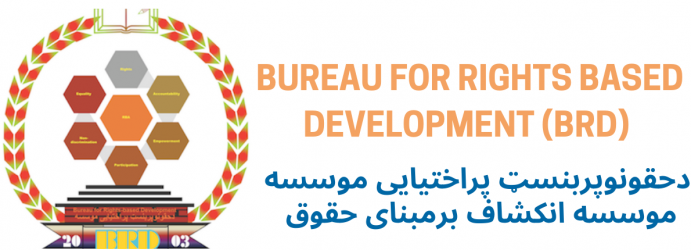Climate Change Preparedness and Adaptability
 The effects of climate change can be felt all around the world but Afghanistan is particularly affected. Communities are highly vulnerable to climate-driven disasters affecting crops and livestock due to the fact that around three quarters of the population is reliant on agriculture for their income.[1] For that reason, a population that is prepared to face the adverse impacts of climate change and is capable to adapt will be able to improve the quality of their livelihoods.Disasters caused by climate change, such as increased frequency and severity of droughts, changes in rainfall, glacial lake outflows, and increased flash flood risk are already evident in Afghanistan. The human and economic impacts are devastating, with an estimated 80% of Afghanistan’s economic losses and hundreds of deaths caused by climate-induced disasters. With no escape from climate change, building the resilience of local communities and ensuring sufficient water resources for agriculture is essential.[2] Through this project, BRD intends to reduce climate change vulnerability and improve practices to face climate change-induced risks to water resources.This project is twofold. First, local communities and district officials are trained in water management techniques and strategies to enable efficient watershed and sub-catchment management of water resources. This will increase available water and contribute to a reduction in inter-community tensions that have occasionally occurred over water resources between up-and down-stream community. Second, public awareness is raised through national campaigns targeting the general public (through radio, television, newspapers, and pamphlets in local languages) and schools regarding climate change impact and adaptation lessons.
The effects of climate change can be felt all around the world but Afghanistan is particularly affected. Communities are highly vulnerable to climate-driven disasters affecting crops and livestock due to the fact that around three quarters of the population is reliant on agriculture for their income.[1] For that reason, a population that is prepared to face the adverse impacts of climate change and is capable to adapt will be able to improve the quality of their livelihoods.Disasters caused by climate change, such as increased frequency and severity of droughts, changes in rainfall, glacial lake outflows, and increased flash flood risk are already evident in Afghanistan. The human and economic impacts are devastating, with an estimated 80% of Afghanistan’s economic losses and hundreds of deaths caused by climate-induced disasters. With no escape from climate change, building the resilience of local communities and ensuring sufficient water resources for agriculture is essential.[2] Through this project, BRD intends to reduce climate change vulnerability and improve practices to face climate change-induced risks to water resources.This project is twofold. First, local communities and district officials are trained in water management techniques and strategies to enable efficient watershed and sub-catchment management of water resources. This will increase available water and contribute to a reduction in inter-community tensions that have occasionally occurred over water resources between up-and down-stream community. Second, public awareness is raised through national campaigns targeting the general public (through radio, television, newspapers, and pamphlets in local languages) and schools regarding climate change impact and adaptation lessons.
[1] https://www.adaptation-undp.org/afghanistan-launches-us71-million-initiative-prepare-rural-communities-climate-change
[2] Ibid.









